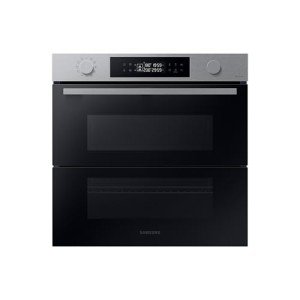The Rise of Built-In Ovens: A Seamless Approach to Modern Cooking
In modern kitchens, where design looks mix seamlessly with performance, one device sticks out as a real game changer: the built-in oven. As homeowners and chefs alike continue to look for innovative options that boost their cooking experience, built-in ovens have become progressively popular. This post checks out the advantages, factors to consider, and trends surrounding built-in ovens, highlighting why they are a vital feature in modern-day cooking spaces.
What is a Built-In Oven?
A built-in oven is a kitchen device created to be integrated into the cabinets of a kitchen rather than standing alone. Unlike conventional freestanding ovens, which can be moved and placed anywhere, built-in ovens been available in numerous styles and sizes to fit specifically within designated areas. Readily available in single or double setups, these ovens offer a structured appearance that matches modern-day cooking area styles.
Benefits of Built-In Ovens
1. Space-Saving Design
Among the most appealing benefits of built-in ovens is their space-saving design. By integrating the oven into cabinets, you can maximize valuable counter and floor area. This is particularly beneficial in smaller kitchen areas, where taking full advantage of space is necessary. Built-in ovens can be installed at eye level, making them more available and lowering the requirement to bend down.
2. Visual Appeal
Built-in ovens add to a smooth and cohesive kitchen area style. Readily available in numerous finishes-- such as stainless steel, black, white, and custom-made cabinetry-- they can blend perfectly into the overall design. bulit in oven and elevates the space, creating a contemporary and sophisticated environment.
3. Improved Functionality
Numerous built-in ovens come equipped with innovative cooking technologies, such as convection cooking, steam ovens, and wise features. These improvements enable flexible cooking alternatives, making it much easier to achieve professional-level results in the house. Smart built-in ovens can even connect to Wi-Fi, allowing users to control the oven remotely, get alerts, and access a variety of cooking programs and dishes.
4. Improved Ventilation

Because built-in ovens can be integrated with kitchen area hoods and ventilation systems, they can assist maintain much better air quality and reduce cooking odors. This is specifically substantial for those who like to cook with fragrant spices and components, as an effective ventilation system can keep the kitchen comfy and inviting.
5. Personalization Options
Built-in ovens provide a wide range of modification choices to fit private cooking designs and needs. From professional-grade home appliances with multiple cooking modes to compact designs for smaller sized cooking areas, property owners can choose the oven that fits their specific requirements. Many makers likewise offer personalized front panels, permitting you to match the oven's look to your kitchen cabinetry for a really merged look.
Factors to consider When Choosing a Built-In Oven
While built-in ovens have numerous benefits, there are essential considerations to keep in mind before purchasing:
1. Rate
Built-in ovens generally include a greater cost than their freestanding counterparts due to their design and installation requirements. It's important to consider both the expense of the oven and any extra expenses related to kitchen cabinetry adjustments or installation.
2. Installation Requirements
Installing a built-in oven often requires expert help, particularly if you need to customize existing cabinets. Ensure that you think about any costs related to installation, including labor and possible cabinetry changes.
3. Size and Dimensions
Before buying a built-in oven, determine the designated space accurately to guarantee an appropriate fit. Built-in ovens come in different sizes and setups, so picking one that lines up with your requirements and kitchen area design is crucial.
4. Way of life and Usage
Consider your cooking habits and requires when selecting a built-in oven. If you frequently host large gatherings, a double oven may be more beneficial. On the other hand, if you have a compact kitchen area, a single-wall oven might be enough.
Patterns in Built-In Ovens
The kitchen area home appliance market is constantly evolving, and built-in ovens are not exempt from emerging trends. Some present trends include:
Smart Technology Integration: With the rise of wise home technology, built-in ovens now often feature connection alternatives. This allows users to keep track of cooking progress and adjust settings through mobile apps.
Energy Efficiency: As sustainability becomes a top priority, numerous manufacturers are purchasing energy-efficient built-in ovens that decrease energy intake while maintaining efficiency.
Multi-functional Designs: Built-in ovens now provide features such as air frying, slow cooking, and steaming, offering flexibility that satisfies a wide variety of cooking approaches.
Conclusion
Built-in ovens undoubtedly represent a perfect blend of style, function, and convenience in today's kitchen areas. As more property owners go with this modern-day solution, the focus shifts to creating a cooking space that is as aesthetically pleasing as it is practical. Whether you are constructing a new home or renovating your cooking area, considering a built-in oven could elevate your cooking experience and transform your kitchen into an elegant and practical sanctuary. With an array of choices available and continuous developments in technology, built-in ovens stay a standout option for both amateur cooks and cooking lovers alike.
